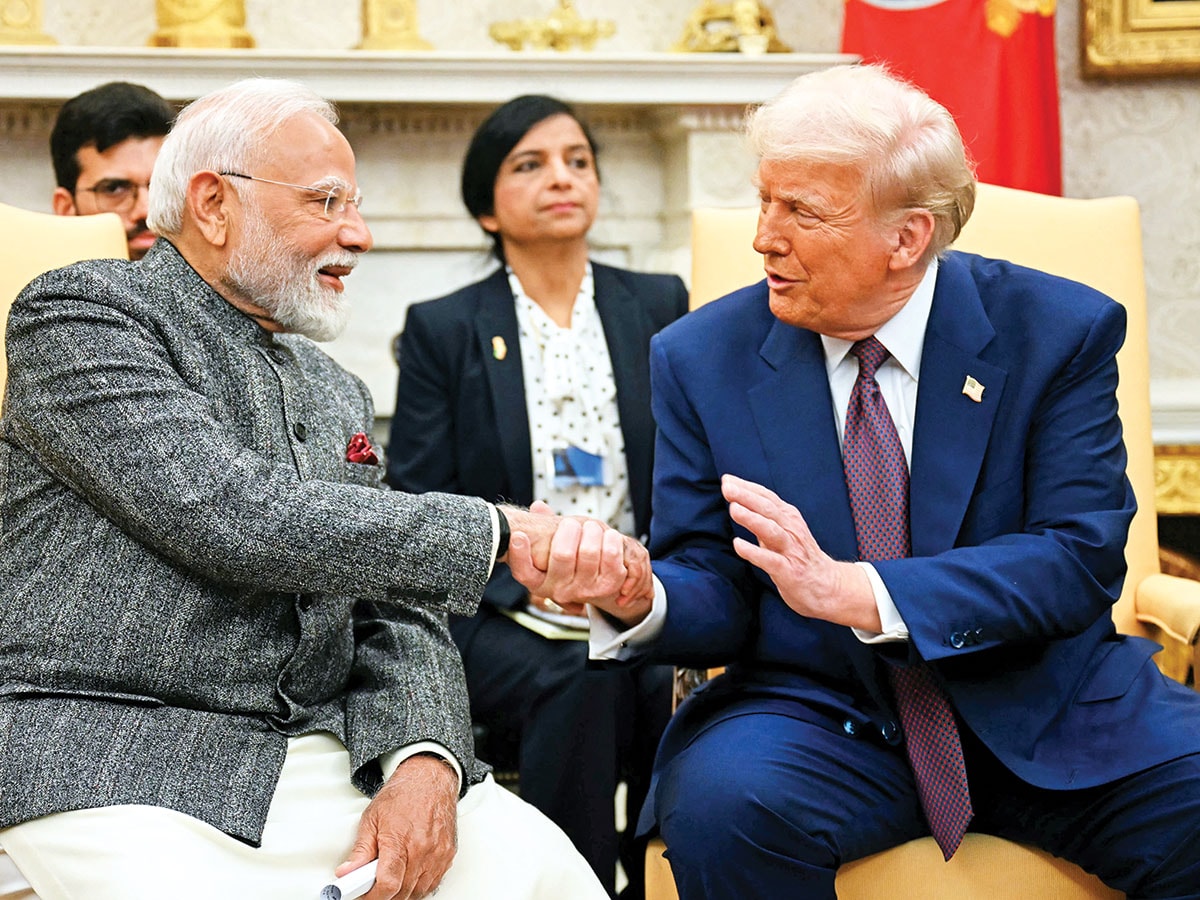Inside Trump’s new trade order
Leverage is a precious commodity in trade negotiations and Trump’s may be losing value


We all should have seen it coming. Candidate Donald Trump was clear on the campaign trail, and when Robert Lighthizer, the first-term US Trade Representative, was nowhere to be seen in the new administration, and the likes of Peter Navarro reemerged, recently exchanging prison grey for suit and tie, the writing was on the wall. Tariffs on steroids would be central to a Trump 2.0 administration’s economic and strategic policies.
More specifically, the new Trump trade policy is a bullying one, and it has been effective as such. Its main features have been identifying pain points for most trading partners, exploiting these to the maximum, including a large dose of unpredictability, and ultimately following through in applying tariffs. Average tariffs now appear to exceed levels from the 1930s when the global economy tanked after a period of increased trade and economic growth. Trump’s trade policy has effectively dismantled the founding principle of “most-favoured nation” treatment in the post-World War II system by penalising countries with bespoke tariff rates and leveraging tariffs to squeeze them into making market access concessions that only a few years ago were unthinkable. Even a bloc of the world’s richest nations—the European Union—knuckled under, agreeing to eliminate all tariffs on US exports of industrial goods.
But leverage is a precious commodity, and there’s a real risk that the Trump administration’s early gains, despite the chaos, start to erode as its leverage is misused and slips away. The current leverage depends heavily on avoiding a repeat of the experience from the 1930s. If global equity markets suddenly shift into negative territory and don’t bounce back as they did when Trump suspended its ‘Liberation Day’ reciprocal tariffs after April 2, the administration will face pressure to reverse course on tariffs. And if inflation picks up (because, after all, US consumers do pay for tariff increases in the long run), there may be some voters in the US President’s MAGA base who blame the party in charge in Congress in the run-up to mid-term elections in 2026, even if they otherwise stick with Trump through thick and thin.
Also read: Trump's 50 percent Tariff on India: Trade war threatens exports, jobs and growth
In the meantime, we may already be in the early stages of a scenario in which Trump’s lieutenants have to become more creative in finding legal authorities to unilaterally announce and apply tariffs. US courts and ultimately the Supreme Court may restrain further action under the International Emergency Economic Powers Act, or IEEPA. I have no doubt that plans are emerging in the administration to use other authorities in the tariff tool kit, but most of these lack the shock and awe of the IEEPA tariffs over the last several months.
All of this is to say that the leverage for historic trade opening deals has been at its highest value during this period, and it is likely this leverage will erode and decrease in value, which could undermine these deals. As a career US trade official, I spent plenty of time negotiating with the EU, and I never would have imagined then that the EU would agree to eliminate its tariffs on all industrial goods for the US in exchange for a US rate of 15 percent. While this EU deal is certainly the most remarkable among all the recent announced deals, other trading partners have bellied up to the table to offer similar commitments. But dark clouds may be forming on the horizon for Trump’s trade policy. Recent reports suggest that Japan may be stalling in moving to the next step of issuing a joint statement and negotiating specific legally binding terms in an agreement. India has faced a withering and perplexing attack from the Trump administration after it seemed ready to conclude an unprecedented trade deal in early July. Since then, the Trump administration has piled on a 25 percent reciprocal tariff and an additional 25 percent ‘penalty’ tariff associated with India’s purchases of Russian oil, yet India has not budged in making concessions to the US that could be politically costly for Prime Minister Narendra Modi.
We may be seeing the first signs of a global resistance to one-sided trade deals precisely because Trump’s leverage may be waning. Many are realising that the value of a trade deal is diminished if there are no US commitments on future tariffs, such as those justified on national security grounds under Section 232 of the 1962 Trade Act. Trust has evaporated for important US trading partners. In fact, the Trump administration may find itself regretting that it didn’t simply claim victory in the first phase of its reciprocal tariff policy and do more to preserve economic and strategic relationships with key allies. I’m sceptical that Modi’s recent meetings with Xi Jinping and Vladimir Putin amount to much more than photo ops, but the risks of flagging US global influence and stature are real if the Trump administration doesn’t use its tariff leverage more wisely.
The writer is a senior advisor at the Asia Group and the US India Strategic Partnership Forum, and a former Assistant US Trade Representative
First Published: Sep 16, 2025, 16:25
Subscribe Now